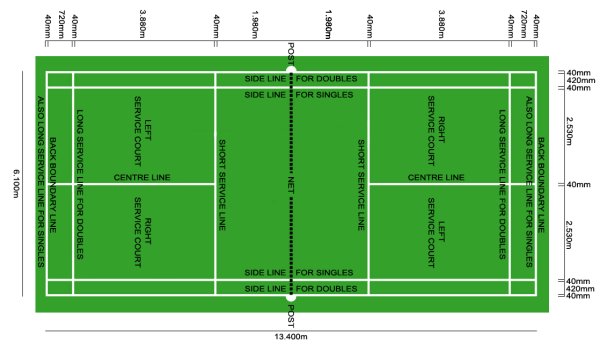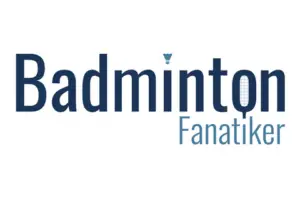Whether you’re a beginner just picking up a racket, a coach guiding young athletes, or a club player trying to avoid those pesky service faults, understanding the rules of badminton is the key to enjoying the game. The Laws aren’t just for international tournaments -they keep rallies fair, fast, and fun in every hall and backyard. This guide breaks down the official BWF Laws of Badminton in plain, easy‑to‑grasp language, with a few coaching tips sprinkled in so you can focus on your shots instead of scratching your head over technicalities.
What’s new or clarified since recent seasons?
- Spin serve is out, permanently. The server must release the shuttle without adding spin and initially strike the base.
- Fixed service height is in the Laws. At impact, the whole shuttle must be below 1.15 m from the court surface.
- Scoring remains 21‑point rally scoring (best of 3) at all standard events. A separate 3×15 (cap 21) system is being trialled at selected events; it does not replace the standard system unless specified by the event.
Tip: If you’re coaching, add a visible “Updated on” line at the top of your team handouts and remind servers to practice clean releases with the SHMD (service height device) in mind.
What is the badminton court dimension?

A badminton court measures 6.1m wide and 13.1m long. Across the rectangular court, there is a net in between than runs at 1.55m. There are two tram lines on each side of the court. The inside lines are a boundary for singles matches and the outside lines are a boundary for doubles matches. Lets explore the badminton court and equipment in detail below:
- Court size (doubles): 13.40 m × 6.10 m.
- Singles side lines: the inner, narrower lines; doubles uses the outer side lines.
- Short service line: 1.98 m from the net; long service line for doubles is shorter than singles (0.76 m inside the back boundary).
- Net height: 1.524 m at centre, 1.55 m at posts.
- Shuttle: traditionally 16‑feather with a cork base (or approved synthetic alternatives).
- Racket: must conform to BWF specs; no devices that materially alter its shape during play.
Coach note: Tape a thin cord at 1.15 m on a wall to give servers a visual for legal contact height during drills.
What is the match format and scoring system used in badminton?
A badminton match always begins with a toss. If you win the toss you have an option to choose either to serve first or to start play at either side of the court. Your opponent will exercise the remaining choice.
- A match in badminton is a best of three games.
- Each game is set for 21 points and the side to achieve 21 points first, wins the game.
- Rally scoring to 21. Every rally scores a point.
- Win by 2 (e.g., 21–19). If it reaches 29‑all, first to 30 wins the game.
- First serve of next game goes to the side that won the previous game.
Intervals & change of ends
Change ends: end of game 1; end of game 2 (if a game 3 will be played); and during game 3 when a side first reaches 11.
Mid‑game interval: up to 60 seconds when the leading side hits 11 points.
Between games: up to 120 seconds.
What are the service rules in badminton?
To deliver a legal service:
- Be ready: Server and receiver should stand inside diagonally opposite service courts without touching the boundary lines.
- Feet still: Part of both feet of server and receiver must touch the court, stationary from the start of service until the shuttle is hit.
- No delay: Once set, do not cause undue delay.
- Release correctly: The server should release the shuttle with no spin and initially strikes the base.
- Height: At impact, the whole shuttle is below 1.15 m from the court surface.
- Racket motion: One continuous forward movement until the shuttle is hit.
- Don’t miss: Attempting to serve and missing the shuttle is a fault.
Start of service = the first forward movement of the server’s racket. Service is delivered when the shuttle is struck (or missed).
Singles vs Doubles service courts
- Singles:
- Server’s score even → serve from right; odd → left.
- Receiver stands in the diagonally opposite court.
- Doubles:
- Same even/odd rule for the serving side’s score.
- Only the designated receiver (diagonally opposite) may return the serve.
- After winning a rally, the same server serves again but switches service court (right↔left).
- If the receiving side wins the rally, service passes to the player in the right‑hand service court of the new serving side.
Service‑court errors (practical handling)
- If players served/received from the wrong court or by the wrong player, correct it as soon as discovered when the shuttle is not in play. The points stand; just fix the positions and continue.
What’s “in” and “out”?
A rally is won when the shuttle lands on a line (lines are part of the court) or in the opponent’s court and is not returned legally. The shuttle is out if it lands outside the boundary lines, passes through/under the net, fails to cross the net, or touches the ceiling/side walls.
Lets and faults in badminton
Let (rally replayed; no point)
- Receiver not ready and makes no attempt to return.
- Shuttle disintegrates in flight.
- Play is interrupted (e.g., another shuttle enters).
- Unsighted line call or other interference; umpire calls a let.
Fault (rally lost)
- Illegal service (any of the serving essentials above not met).
- Shuttle lands out, caught/held on the racket, double hit as two separate strokes, or propelled in a controlled carry.
- Net/contact violations: player invades opponent’s court over/under the net to interfere; or touches the net/supports with racket/body while the shuttle is in play.
- Obstruction or distraction of an opponent.
Also read: Common Faults in Badminton
Clarification: A single, continuous stroke that makes contact with the shuttle more than once is not a fault (e.g., frame+strings in one motion). Two separate strokes is a fault.
Who are the officials in badminton?
- Umpire controls the match, keeps score, applies the Laws.
- Service Judge watches service faults (height, feet, release).
- Line Judges call in/out for their assigned lines.
- Instant Review System (IRS): Where in operation at an event, players may challenge line calls; the Referee decides using IRS. The number of challenges and procedures are set by event regulations.
What rules are followed for coaching & conduct during a badminton match?
- Play is continuous except during the permitted intervals above.
- Coaching only during intervals when the shuttle is not in play; players must not delay the game.
- Leaving the court requires the umpire’s permission.
- Misconduct escalates from warning to fault/penalty and, in serious cases, disqualification.
What are the penalty cards in badminton
A yellow card is given to a player when they breach the official game laws. As a result, a monetary fine is imposed on the player. When the player is given a yellow card, the umpire calls the offender to his/her side and loudly announces the player’s name and says ‘Warning for misconduct’. While doing so, they hold the card above their head with the right hand. Therefore, a yellow card is given when a player is accused of misconduct.
When a player receives two yellow cards, they receive a red card and a point is awarded to the opponent. To know more, click here.
Final thoughts
Learn and play keeping all the badminton rules in mind, as lack of awareness, can prove to be a disadvantage for you. Initially, you may feel burdened with the set of rules. But as you play, you get comfortable with the overall standard of play.
I hope you enjoyed this article.
Thanks for reading. Keep playing.
